The week at a glance
- Chestnut Bunting on Papa Westray
- Chimney Swift briefly in Co Cork
- Blyth's Pipit still on Scilly
- Another White's Thrush on Shetland
- Apparent Short-toed Treecreeper in East Sussex
Few people paid much attention to a report of a Yellowhammer on Papa Westray, Orkney, last Monday until a poor-quality photo emerged late on the Tuesday evening, suggesting it might be something altogether rarer. It was not until 24 hours later, late on Wednesday evening, that further images emerged and served to confirm suspicions — the bird, with its rich chestnut hue on the upperparts, face and in particular tertial fringes, was surely a Chestnut Bunting!
With no sign of the bird since it was briefly seen on the Tuesday, the automatic assumption was that it had gone — a potential first for Britain seemingly slipped through the net and rendered untwitchable. It was therefore something of a surprise when, in mid-afternoon on Saturday, news of its continued presence on Papay reached the airwaves. Game on — and so it proved: the bird was still there and showing well to all comers throughout Sunday, Monday and Tuesday.
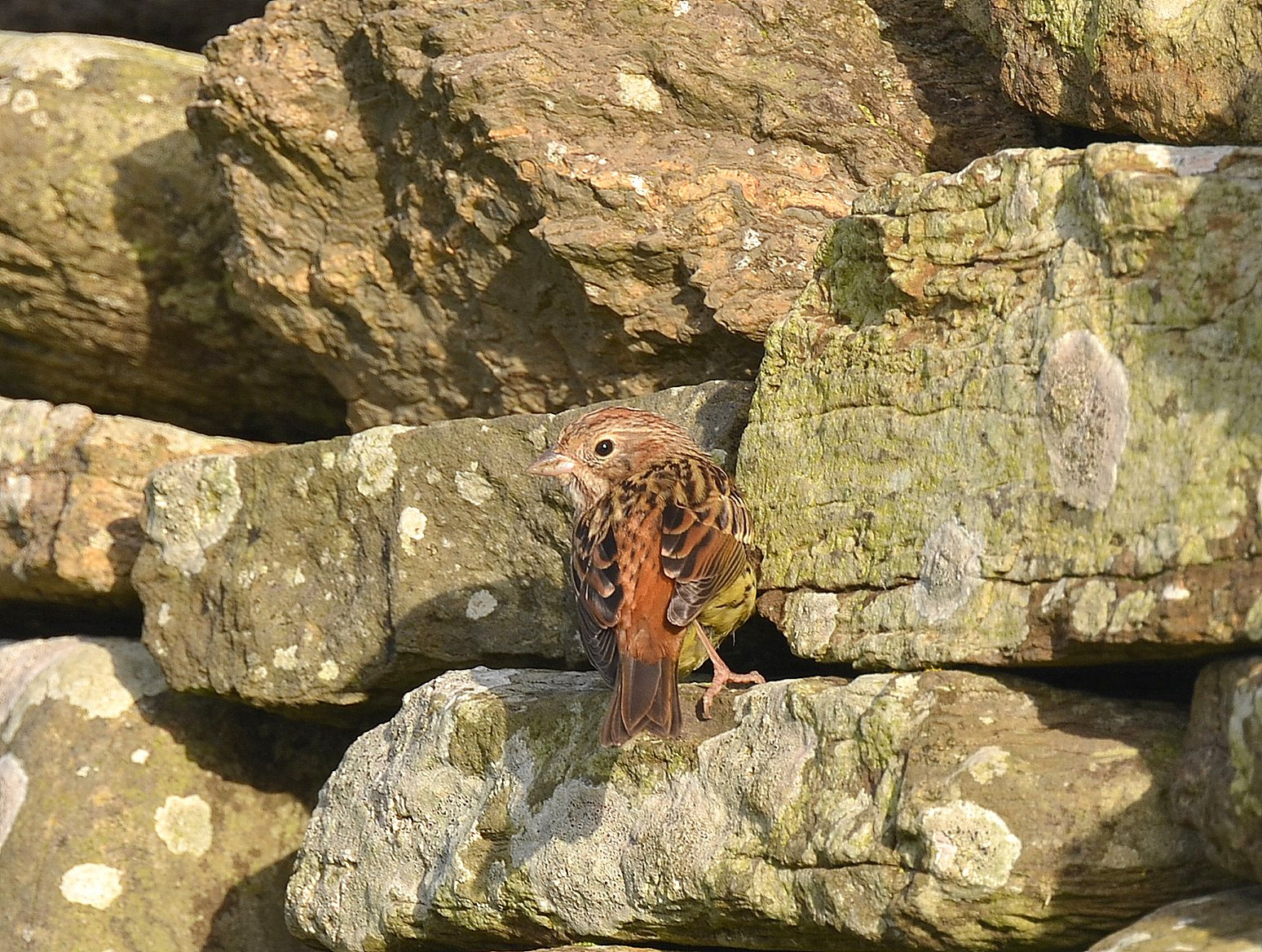
Chestnut Bunting, Papa Westray, Orkney (Photo: Chris Bromley)
Chestnut Bunting has a chequered history in the Western Palearctic. Though there are clearly a number of recent records from other countries that fit the typical pattern of vagrancy for Far Eastern passerine migrants, all of Britain's previous records have been assigned to Category E — in most cases, probably rightly so, the best candidates for wild birds being the adult females seen on Out Skerries from 2–5 September 1994 and Fair Isle on 6–7 September 2002. There can be no denying that the appearance of a first-winter on British shores in mid-October changes everything, and one would anticipate that this will ensure the species is upgraded from Category E to A.
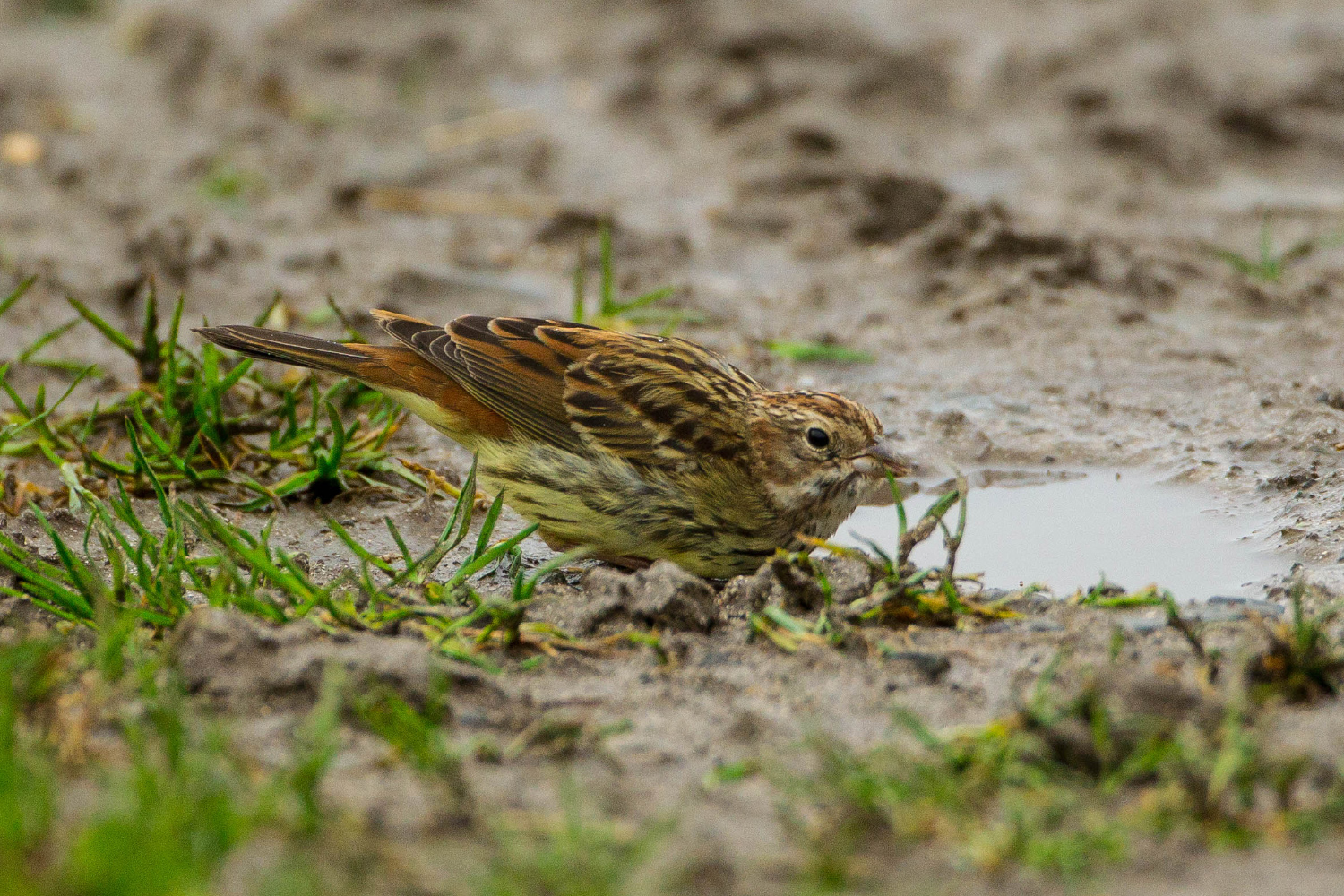
Chestnut Bunting, Papa Westray, Orkney (Photo: Mark Rayment)
It was otherwise a fairly quiet week for major rarities, with something of a clear-out taking place on Wednesday: there was no sign of Tuesday's Siberian Rubythroat on Fair Isle nor the Porthgwarra Brown Shrike, though it looks as though the latter might have hopped across the Channel to Brittany (see Western Palearctic news). Best of the new arrivals was a Chimney Swift that came in off the sea at Mizen Head, Co Cork, on 26th, though it didn't linger, flying straight inland and being lost to view. A White's Thrush was at Gulberwick, Shetland, on 23rd (and still there two days later), while the long-staying Blyth's Pipit continued to perform well on St Mary's, Scilly, to at least 25th. Beachy Head, E Sussex, hosted an apparent Short-toed Treecreeper during the morning of 27th, but it wasn't seen again.
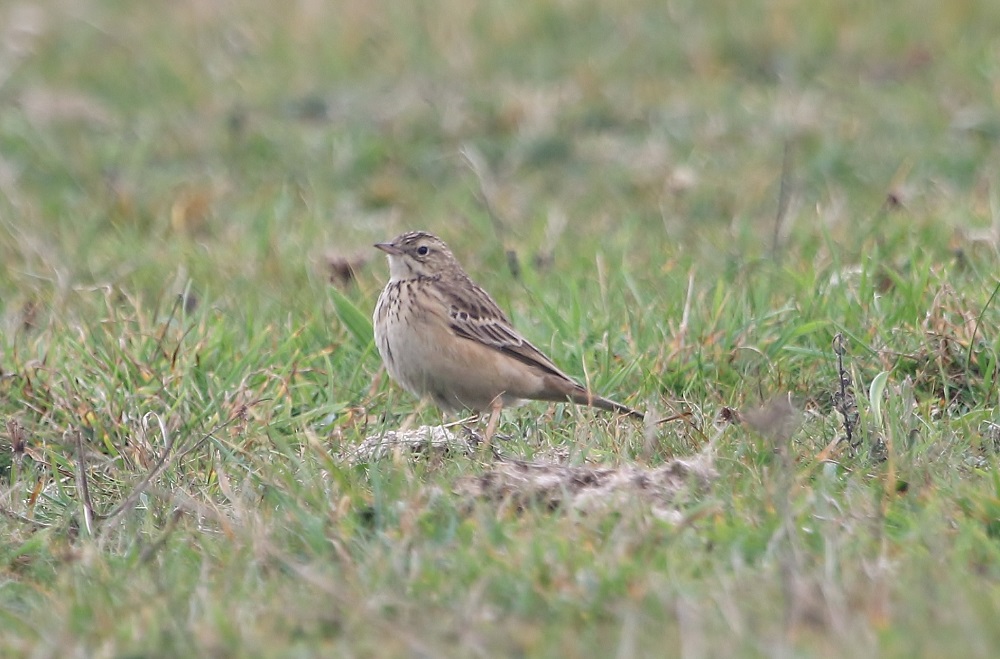
Blyth's Pipit, St. Mary's, Isles of Scilly (Photo: Zac Hinchcliffe)
The Black Scoter in was again seen off Rossbeigh, Co Kerry, on Tuesday but, rather surprisingly, no Surf Scoters were reported this week.
A smart drake Bufflehead at Ullswater, Cumbria, from 24th would have been one of the highlights of the week had it not revealed an obvious yellow ring on its leg — given its location and date of arrival, no doubt this would have been treated as genuine had it not betrayed its origins with its plastic bling. A young drake Ring-necked Duck was seen alongside the returning Lesser Scaup in Cardiff Bay, Glamorgan, for much of the week, with further returning Ring-necks on Lough Shivnagh in Co Donegal, Carrowmore Lake in Co Mayo, and Lough Beg in Co Londonderry. Another drake was on Lough Mourne, Co Antrim, from 23rd and the long-stayer was still in Hertfordshire all week. The only Ferruginous Duck this week was the Blashford Lakes bird.
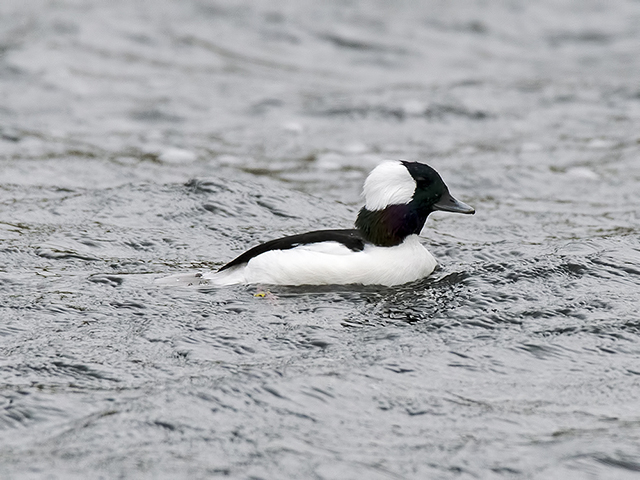
Bufflehead, Ullswater, Cumbria (Photo: Brian Martin)
Six Green-winged Teal included the returning drake at Caerlaverock, Dumfries & Galloway, from 21st. Further Scottish records came from Islay, Mainland Shetland and Clyde, while drakes were identified near Llanddewi Brefi, Ceredigion, and on Lough Beg, Co Londonderry, on 25th. It's rare for American Wigeon to outnumber Green-winged Teal but it happened this week, with seven seen. Four were seen in Scotland: one lingered on Orkney and in Argyll birds were on Tiree and Islay; a drake was also at Loch of Strathbeg, Aberdeenshire, on 24th. Three Irish records came from Counties Wexford, Donegal and Leitrim, the latter two returning drakes to Culdaff and Tullaghan respectively.
The only Snow Goose this week was a blue morph among Pink-feet at Stormont Loch, Perth/Kinross on 25th. Islay produced two Richardson's Cackling Geese and the Todd's Canada Goose around the island, though there was no news on the Ridgway's Cackling Goose in Devon. The adult Black Brant was again at Cley, Norfolk, with another at Ferrybridge, Dorset, on 26th and a probable at Trimley Marshes, Suffolk, on 22nd.
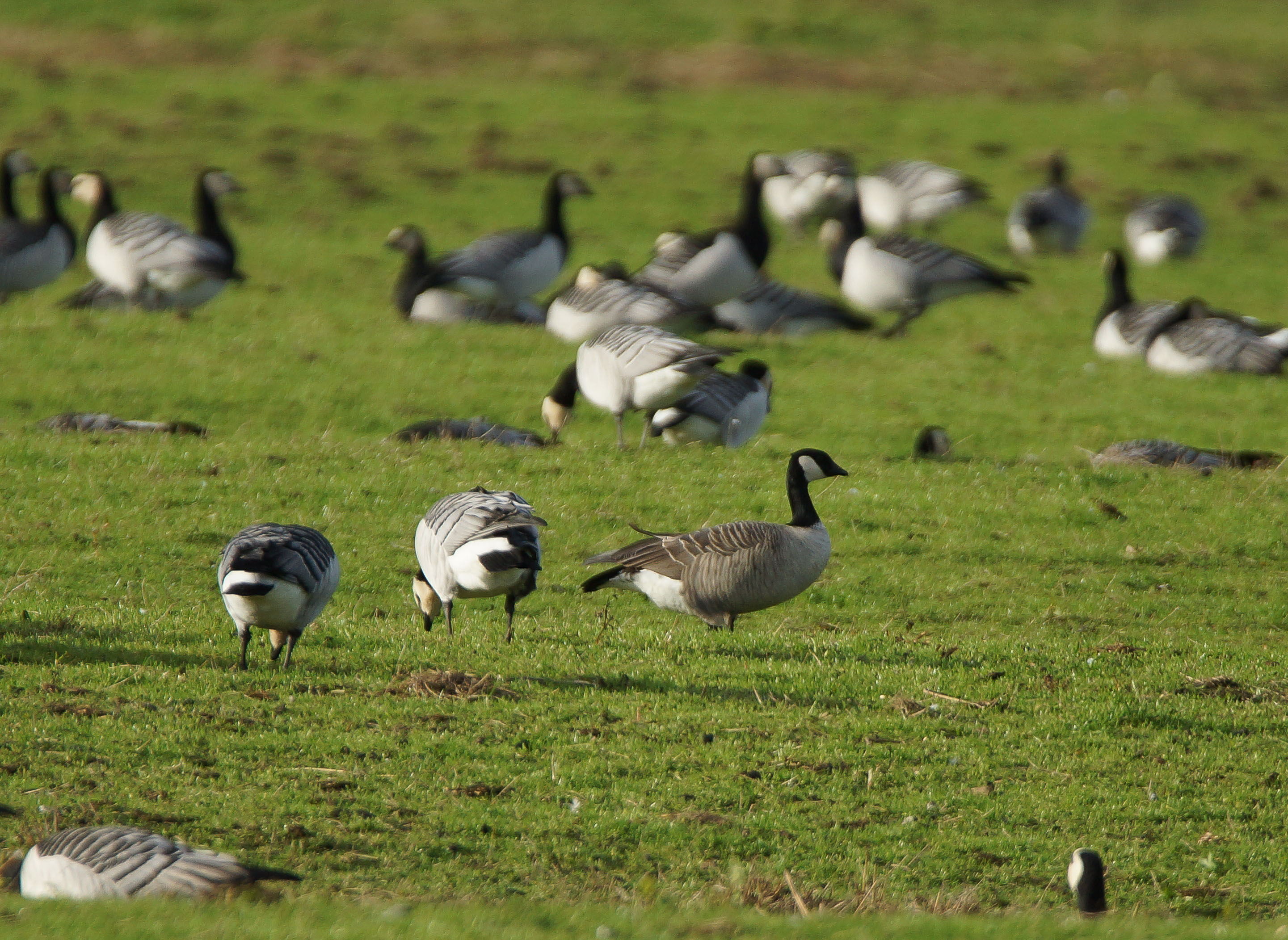
Richardson's Cackling Goose, Loch Gruinart RSPB, Islay, Argyll (Photo: Steve Percival)
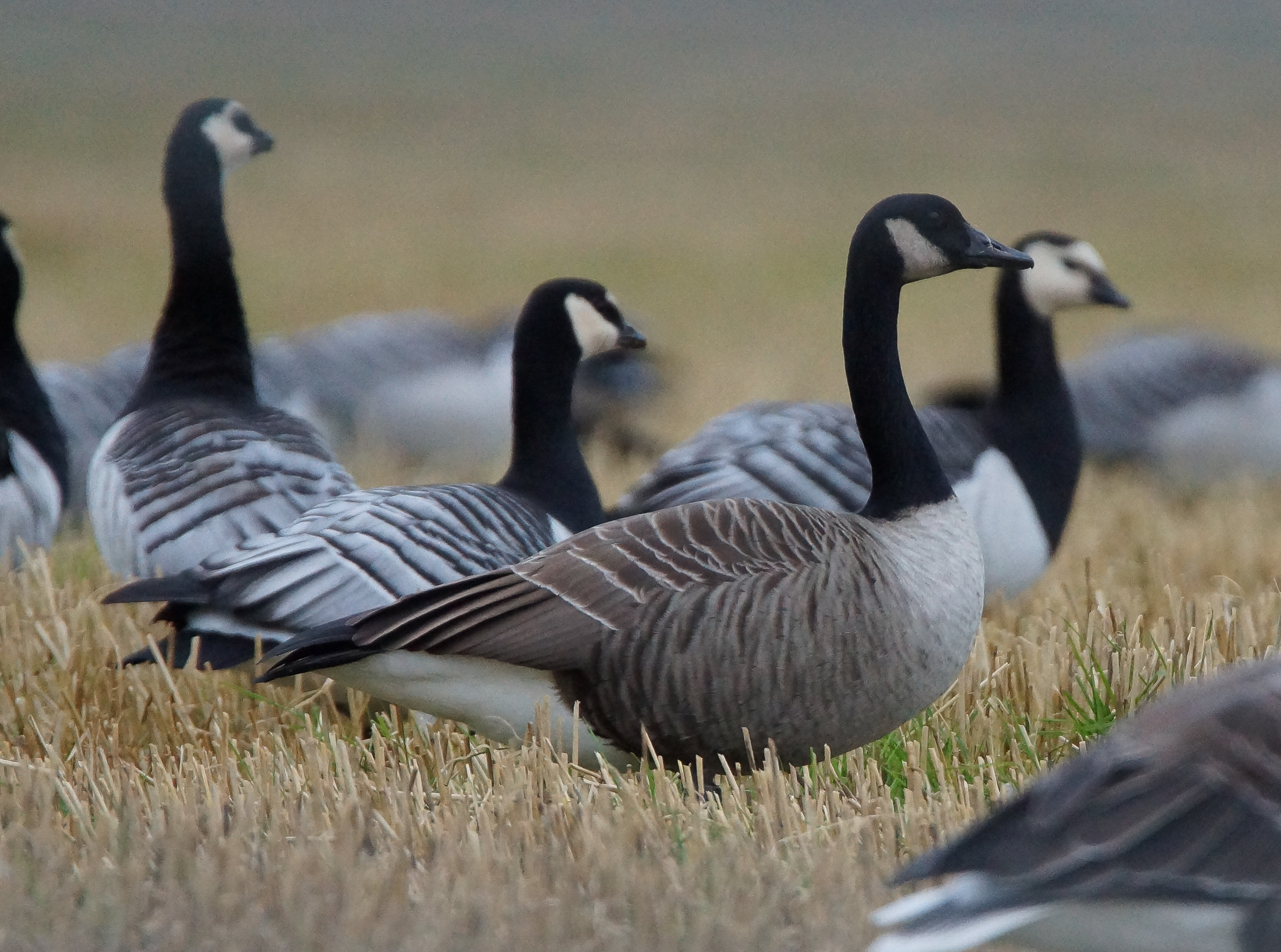
Todd's Canada Goose, Bowmore, Islay, Argyll (Photo: Steve Percival)
Once again there was no shortage of Glossy Ibises seen, with a bird over Papa Westray, Orkney, on 23rd arguably the most extreme of the lot. A good record for London came from Walthamsow Reservoirs on 21st and what was presumably the same was at Rainham Marshes the following day. A bird at Kilwinning, Ayrshire, from 21st was both tame and popular, while Irish records came from Counties Cork, Kerry (2), Wexford and Londonderry. Evidence that birds may still be arriving came in the form of a bird over Radipole Lake, Dorset, on 24th, and long-stayers remained in Essex and Somerset.
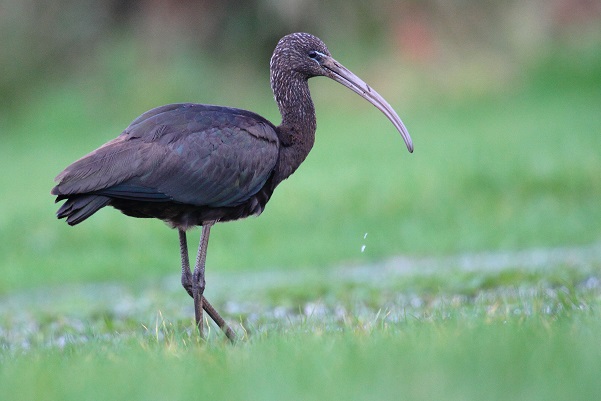
Glossy Ibis, Kilwinning, Ayrshire (Photo: Liam Reid)
A Squacco Heron was at Nanjizal, Cornwall, on 24th but not reported until 27th; it later transpired that it had been seen in flight over nearby Skewjack on 26th. The Cattle Egret remained at Collafirth, Shetland, to at least 25th; the only other reported was the long-stayer at Shapwick Heath, Somerset. Eight Great White Egrets continued to roost at Dungeness, Kent, and a Northamptonshire county record of five at Pitsford Reservoir from 23rd was also notable.
Last week's juvenile Pallid Harrier remained at Annagh Marsh, Co Mayo, to 25th and another youngster flew south over Easington and Spurn, E Yorks, that day. The Northern Harrier was still on North Ronaldsay on 26th. Over 20 Rough-legged Buzzards were seen in eastern England — many of them in Norfolk, where the week's peak count of two was made at Stubb Mill, Hickling, on 22nd. One was unfortunately found dead at Grain, Kent, on 25th; inland birds were recorded in Cambridgeshire and Hertfordshire on 26th, while the highlight was the extraordinarily tame juvenile continuing to perform well at Holland Haven, Essex, throughout the week.

Rough-legged Buzzard, Holland Haven CP, Essex (Photo: Jason Ward)
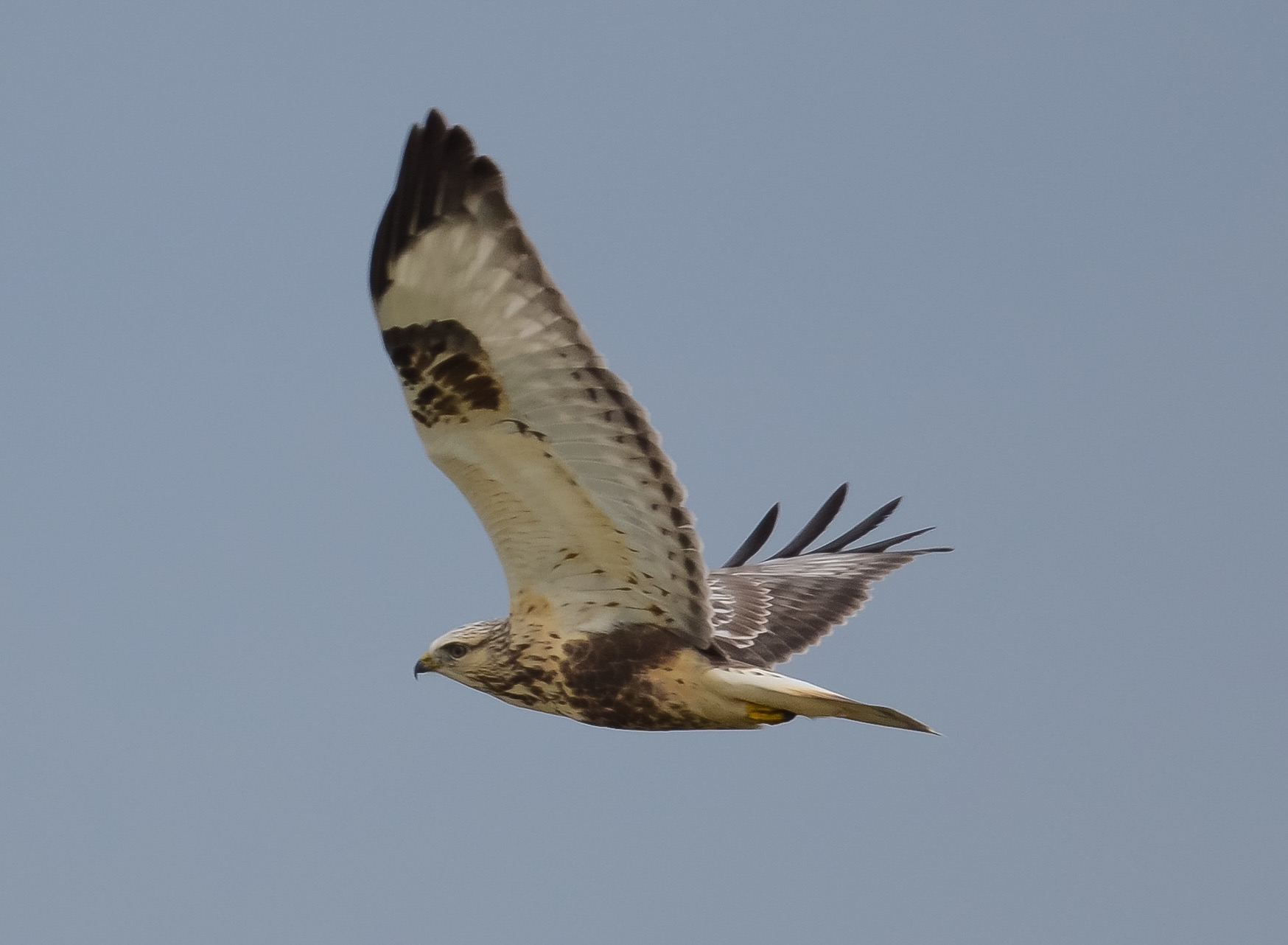
Rough-legged Buzzard, Holland Haven CP, Essex (Photo: John Pringle)
Last week's adult White-rumped Sandpiper at Bamburgh, Northumberland, was last reported on 21st. In Ireland juveniles were discovered at Carrahane Strand, Co Kerry, on 22nd and Inch Island Lake, Co Donegal, on 23rd and an English juvenile was on Farlington Marshes, Hants, from 25th. Just one Pectoral Sandpiper was seen — at Pulborough Brooks, W Sussex, on 24–25th — and the Temminck's Stint remained at Blagdon Lake, Somerset, to 25th.
Still there on 24th, the Isle of Wight Greater Yellowlegs shows no sign of going anywhere any time soon. A Lesser Yellowlegs was new on Tiree, Argyll, on 21st and was still present three days later, while a juvenile Spotted Sandpiper was discovered at Chard Junction, Dorset, on 25–26th following another on Tresco, Scilly, on 21st. In Hampshire the Long-billed Dowitcher continues to frequent Pennington Marsh — it could feasibly go on to winter in the area. Seven American Golden Plovers included the continuing well-watched juvenile at Kilnsea, E Yorks, and a smart moulting adult at Eyebrook Reservoir, Leics, from 22nd. Another juvenile was at Breydon Water, Norfolk, from 24–26th with further records from the Outer Hebrides and Counties Cork (2) and Londonderry.

Spotted Sandpiper, Chard Junction, Dorset (Photo: Dave Helliar)
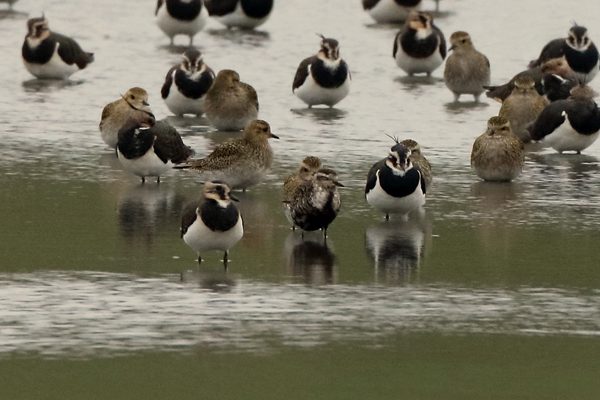
American Golden Plover, Eyebrook Reservoir, Leicestershire and Rutland (Photo: Dave Kelsall)
Last week's Gull-billed Tern continued to patrol the estuary at Blennerville, Co Kerry, throughout the week, while news was received that the adult Forster's Tern was once again back at Claddagh Beach, Co Galway, on 24th — for its thirteenth winter running. The apparent American Herring Gull was seen again in fields near St Just, Cornwall, on 22nd, while Devon's adult Bonaparte's Gull continued to alternate between Dawlish Warren and the Teign Estuary. Ring-billed Gulls were limited to familiar faces in Cornwall, Highland and Counties Galway and Antrim — no sign of the Hampshire bird yet, though.

Gull-billed Tern, Blennerville, Kerry (Photo: Aidan G. Kelly)
The Short-toed Lark continued to perform superbly on St Mary's airfield throughout the week. A Shore Lark was at Minsmere, Suffolk, from 22–25th; another was at West Runton, Norfolk, on 25th and six were reported at Titchwell that day.

Short-toed Lark, St. Mary's, Isles of Scilly (Photo: Zac Hinchcliffe)
Numbers of rare eastern migrants really dropped off this week and that was typified by just two Olive-backed Pipits being seen — the bird on St Martin's, Scilly, to 22nd and one still on Fair Isle to 26th. A light scattering of Richard's Pipits included up to three at Long Nab, N Yorks, and at least that many on Fair Isle; a good inland record came from Selsey Common, Glos, from 23rd onwards.

Richard's Pipit, Long Nab, Burniston, North Yorkshire (Photo: Dave Mansell)
There was a similar significant downturn in Red-flanked Bluetail occurrences — a bird on Bardsey Island, Gwynedd, on evening of 25th was the only new bird of the week and the only individual to linger from last week was that at Sandwich Bay, Kent (still there on 26th). One of the highlights of the week was a gorgeous male Siberian Stonechat at Caister-on-Sea, Norfolk, for five days from 21st. Initially quite mobile and wary, it seemed to become more confiding as the week wore on and we've received some cracking images of it. Another, this time a first-winter, was at Hook-with-Warsash, Hants, on 24th only. Two Bluethroats were at Beachy Head, E Sussex, on 25th and a third was at Happisburgh, Norfolk, the previous day.
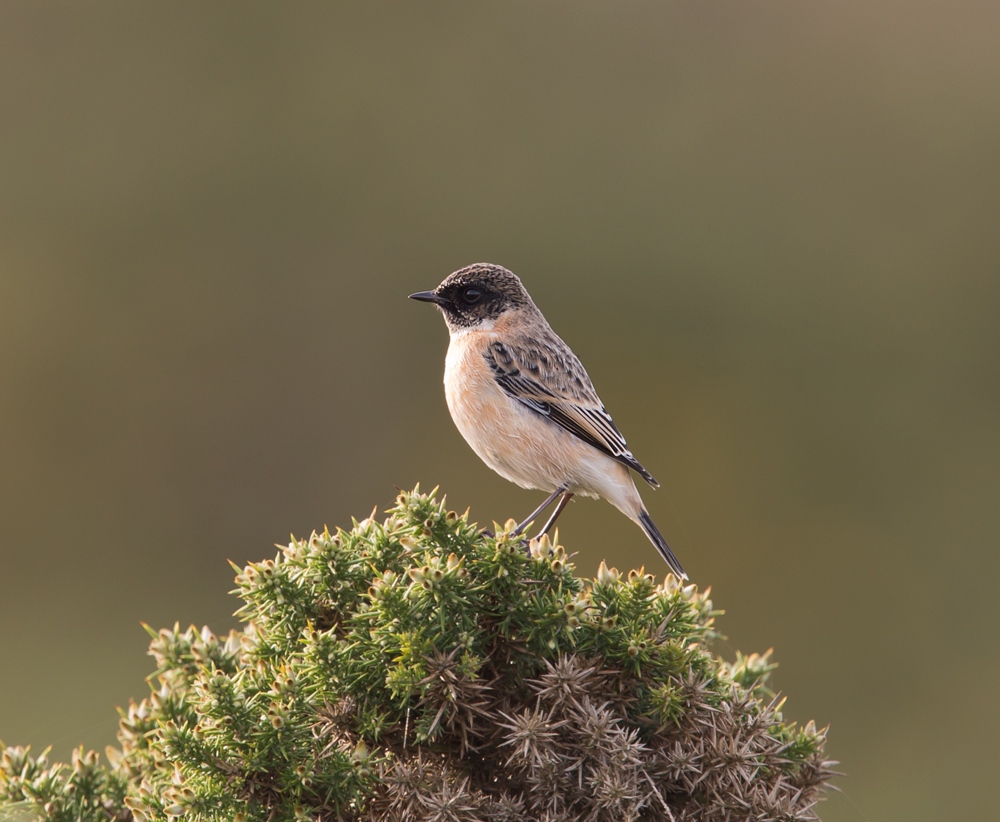
Siberian Stonechat, Caister-on-Sea, Norfolk (Photo: Graham Clarke)
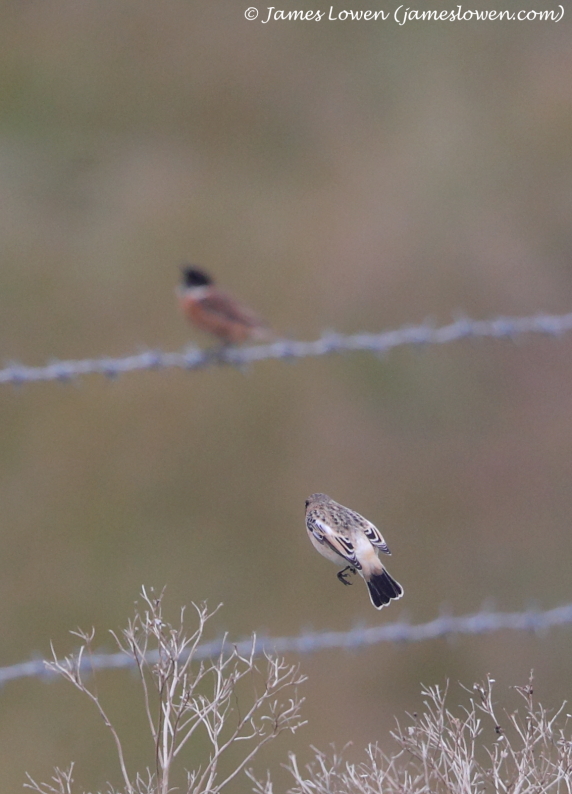
Siberian Stonechat, Caister-on-Sea, Norfolk (Photo: James Lowen)
Following the Pallid Harrier and Two-barred Crossbill, an Arctic Warbler found at Erris Head, Co Mayo, on 22nd was the third county first found on the Mullet peninsula within a fortnight — it was still there on 25th. New Dusky Warblers were found at Isbister, Shetland, on 25th, Dungeness, Kent, on 26th and St Agnes, Scilly, on 26–27th. A Radde's Warbler was elusive at Berry Head, Devon, on 25th, with a second on St Agnes on 27th. Pallas's Warbler numbers were down on last week, with around 20 recorded, though there was a clear arrival of migrants on 27th that produced at least eight of these glorious sprites between Scilly and North Yorkshire. Associated with this arrival was a Hume's Leaf Warbler at Flamborough Head, E Yorks, in mid-afternoon on 27th. A Barred Warbler remained at Flamborough Head, E Yorks, to 27th and another was at Dungeness, Kent, on 23rd. A late Melodious Warbler was at Mizen Head, Co Cork, on 27th.
As you'd expect with the end of October approaching, the number of scarce migrants continues to dwindle: the week's only Red-backed Shrike was at Three Castles Head, Co Cork, and only Common Rosefinch on St Martin's Scilly, both on 22nd. Red-breasted Flycatchers can be a little more numerous in late October but just three were noted: at Hook Head, Co Wexford, on 21st, Felixstowe Ferry, Suffolk, on 25th and Cape Clear, Co Cork, on 27th. At least one Serin flew south over Gibraltar Point, Lincs, in mid-morning on 23rd and another was reported from Kelling, Norfolk, on 27th. Three Rose-coloured Starlings remained: two in Cornwall, including the ridiculously tame juvenile at Land's End all week, and one still at East Mersea, Essex, to 25th. Just one Wryneck was seen this week, at Calshot, Hants, on 25th.

Rose-coloured Starling, Land's End, Cornwall (Photo: Robin Edwards)
Great Grey Shrike numbers were down considerably this week, yet birds were still reported from 56 sites nationwide — and some of these held more than one bird. There was a definite shift in the spread of records, with a lesser percentage of birds on the east coast and many turning up at traditional wintering locations. Furthermore there were also several reports from the south coast, where the species is usually very scarce, with Sussex prospering in particular.
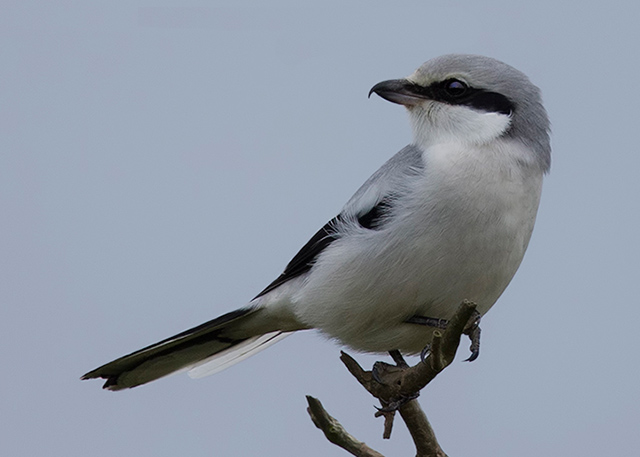
Great Grey Shrike, Reculver, Kent (Photo: Steve Ashton)
A Little Bunting remained on Fair Isle to at least 26th, with others on Barra on 23rd and Donna Nook, Lincs, and Bryher, Scilly, on 27th; unfortunately one on nearby St Mary's on 22nd had expired. An Ortolan also continued on Fair Isle and another was still on St Martin's, Scilly, to 23rd. Two possible Two-barred Crossbills flew over Great Orme, Conwy, on 25th.

Ortolan Bunting, St. Martin's, Isles of Scilly (Photo: Zac Hinchcliffe)
While not a massive influx, the appearance of Long-tailed Blue butterflies at two sites in Sussex this week hinted that it's still worth looking out for this rare species, despite it being late in the season. The individual below was brilliantly photographed in Newhaven on 27th.
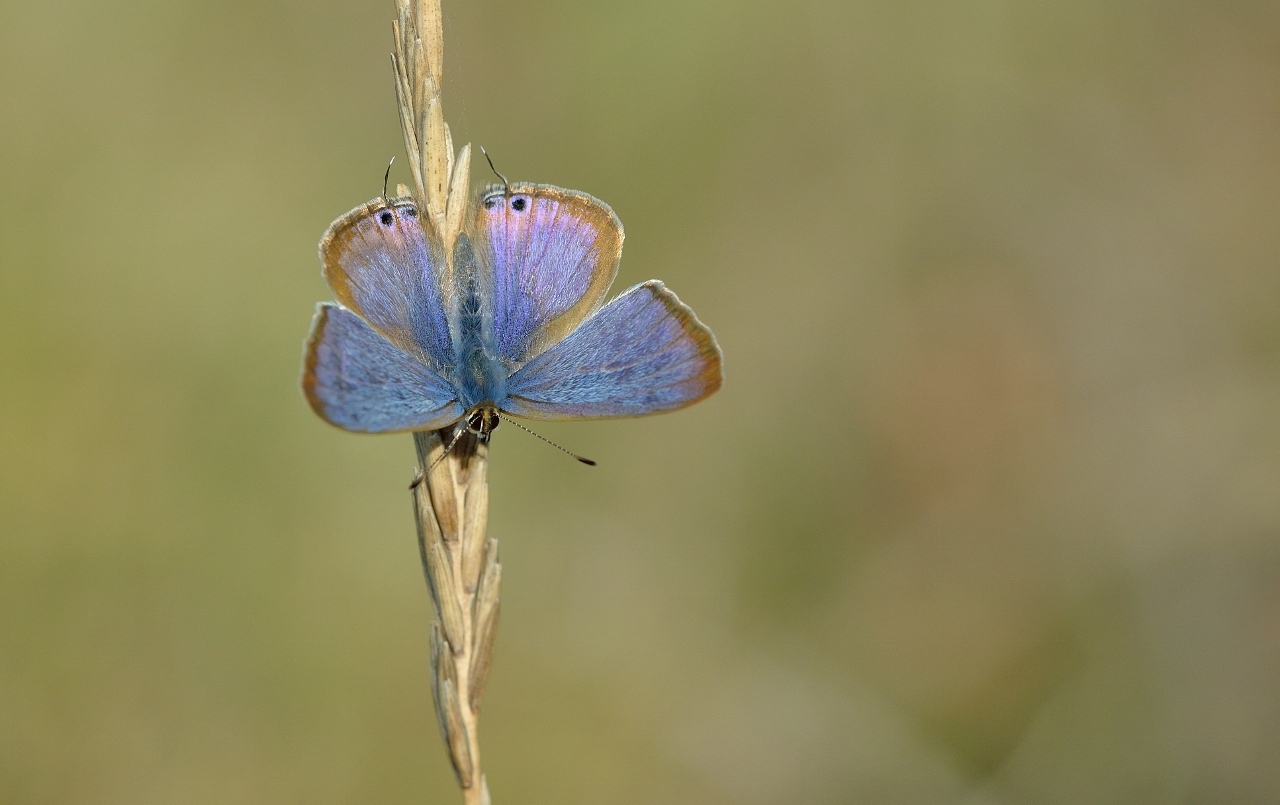
Long-tailed Blue, Newhaven, East Sussex (Photo: Bob Eade)
Western Palearctic news
Eyes remained focussed on Corvo, Azores, where a fine array of Nearctic vagrants included several new finds. A second Black-throated Blue Warbler of the autumn on 21st, the second Hermit Thrush for Corvo (and the Azores) and a juvenile Northern Harrier on 23rd, an American Redstart on 25th and a Sora on 26th were all among the new discoveries. Earlier in the week both Eastern Wood Pewees and the Brewster's Warbler remained, while other totals included 2 Common Yellowthroats, 4 Grey-cheeked Thrushes, 6 Rose-breasted Grosbeaks, 8+ Red-eyed Vireos and 10+ Indigo Buntings.
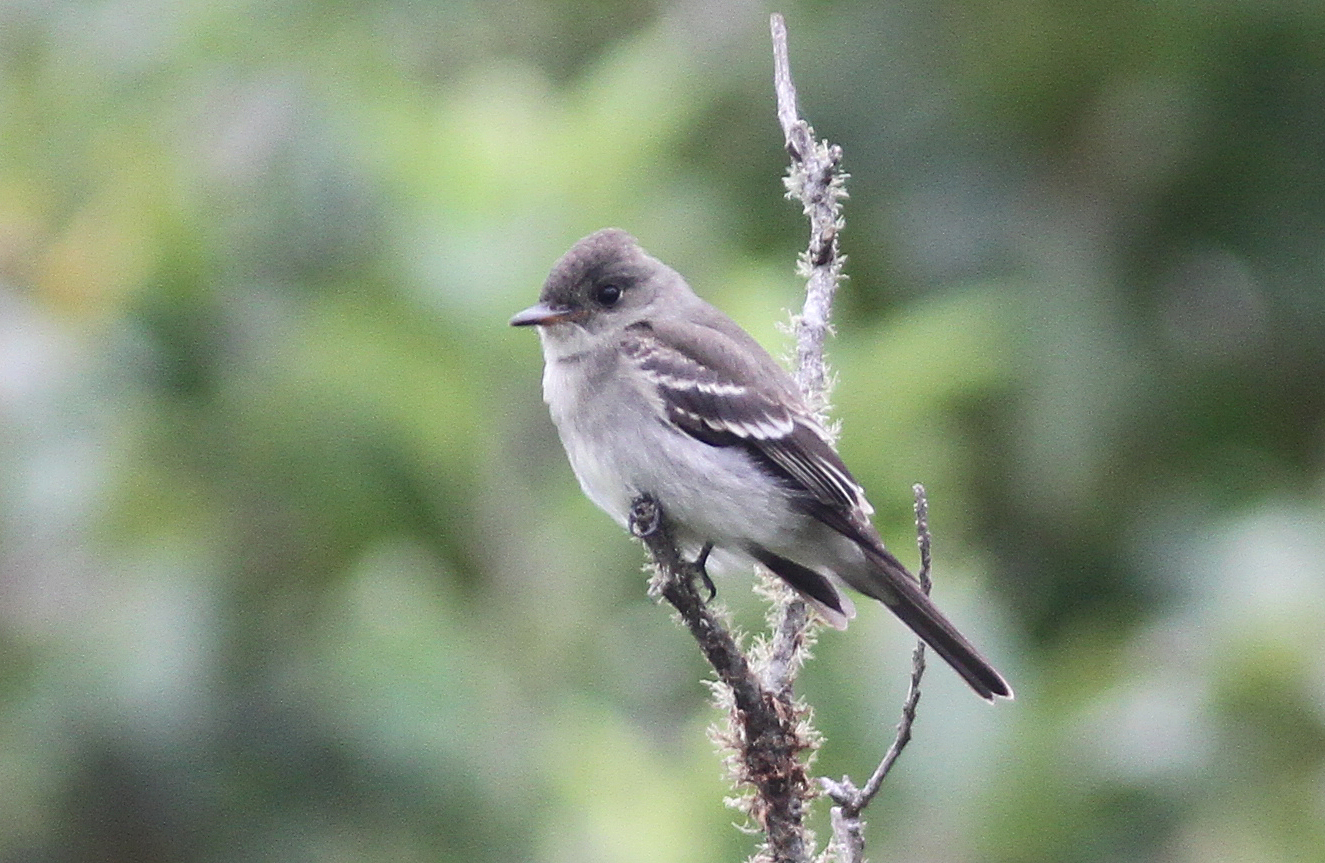
Eastern Wood Pewee, Azores (Photo: Peter Alfrey)

Rose-breasted Grosbeaks, Azores (Photo: Peter Alfrey)
Elsewhere a Red-eyed Vireo made it to southernmost Iceland from 20–22nd and the Long-legged Buzzard returned to Maasvlakte, Netherlands, on 22nd. A Brown Shrike on Ouessant Island, France, on 21st looked extremely similar to the recent Cornish bird in photos. Finally, an African Swamphen was found near Eilat, Israel, on 23rd.


